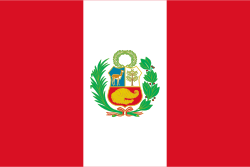Peruvian Boy Rescued After Being Buried Alive by Uncle in Witchcraft Incident
 Peru
PeruScientists from around the world have unveiled the intricate tattoo work of the ancient Chancay culture, a pre-Columbian civilization from Peru, using a novel method known as laser-stimulated fluorescence. This groundbreaking technique enabled researchers to analyze tattoos on 1,000-year-old mummies, revealing precise details that were previously obscured due to the decay of the skin and fading of the ink.
The Chancay civilization, which thrived along the coast of Peru from 900 to 1500 A.D., is well-known for its advanced artistic practices, including ceramics and textiles. The tattoos discovered feature geometric patterns, akin to those seen in their pottery and fabric art. The researchers noted that the tattoo lines range from just 0.1 to 0.2 millimeters in width, indicating a remarkable level of skill that rivals modern tattooing techniques.
The findings, published in the journal Proceedings of the National Academy of Sciences, aim to shed light on the societal structures of the Chancay people, as tattoos can often reflect an individual’s status within their culture. Co-author Michael Pittman stated that this study represents the first application of laser-stimulated fluorescence on ancient tattoos, offering clarity and contrast that traditional methods could not.
Despite its promise, some experts express caution about the technique's capabilities. Notably, Aaron Deter-Wolf, an ancient-tattoo expert, acknowledges laser-stimulation's potential but remains skeptical about its groundbreaking impact.
Researchers are optimistic that the success of this technique will pave the way for future explorations into ancient tattoos from various cultures, enhancing our understanding of human history and artistic expression.
 Peru
Peru Peru
Peru Peru
Peru